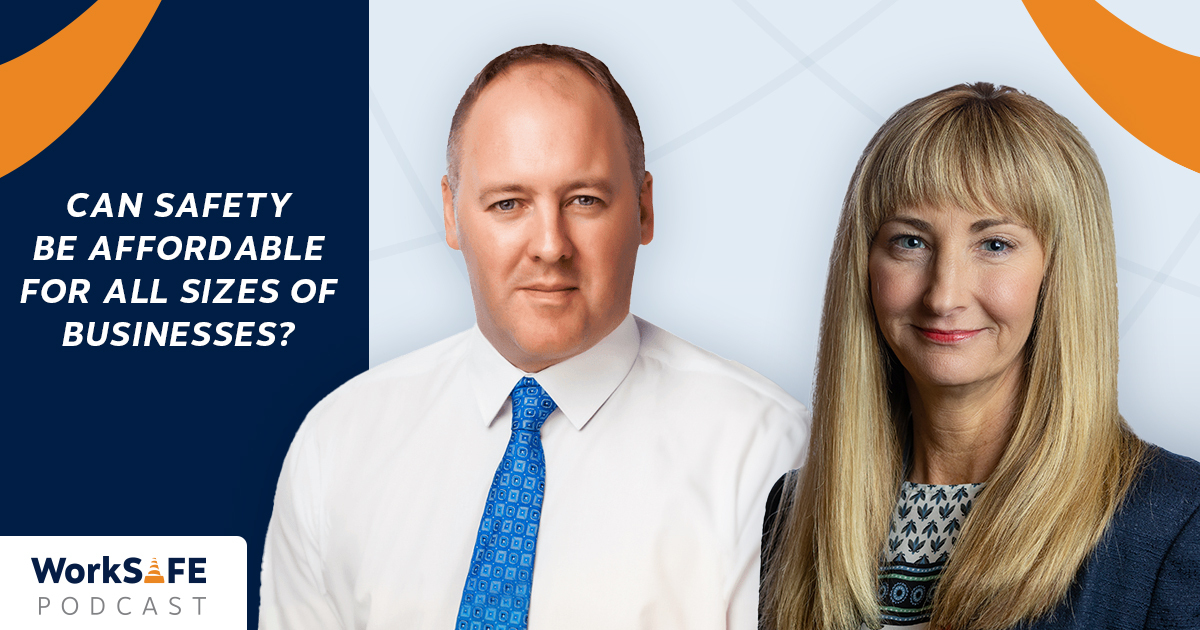Safety budgets are critical in every workplace regardless of size. Depending on the industry, hiring an in-house safety professional, investing in new equipment, or scheduling safety training may be a part of a comprehensive safety plan. These expenses can add up quickly.
As a result, these costs can feel pretty unmanageable, especially for small to mid-size businesses. How do employers determine which solutions are right for them – and at an affordable cost?
On this episode of the WorkSAFE Podcast, we sit down with Gavin Coyle. He is an Ireland-based consultant with more than 25 years of experience in safety, leadership, and business consulting. Coyle is passionate about helping businesses of all sizes develop safety cultures and recently authored Workplace Safety on a Budget: Affordable Workplace Safety Solutions.
First, we’ll discuss barriers to effective safety budgets. Then, we’ll talk about the strategy that turns safety into profit. Finally, we’ll share why reinvesting the savings that come from safety helps to build sustainable businesses.
Listen to this episode of the WorkSAFE Podcast or read the show notes below.
Barriers to effective safety budgets
Businesses large and small stumble over one common barrier when it comes to safety: bias. “People come with their own biases and their own sort of interpretation of how to manage risk,” Coyle shared. “It can complicate something that should be fairly easy and very practical and very simple and very logical to to follow.” What do these biases look like?
Some businesses employ too much paperwork. Signed safety rules and policies do improve workplace safety. But more paperwork doesn’t always equal less risk. Further, safety documents are just one aspect of a complete safety culture. Others complicate safety processes. Excessive systems and steps can muddle an employee’s understanding of the measures meant to keep them safe.
Safety solutions for any business
Even the largest businesses in every industry encounter challenges when it comes to safety budgets. Everything from finding funds to leadership buy-in act as stumbling blocks to implementing true change.
Coyle finds that businesses who invest in building a structure of safety efforts in their workplace not only thrive, but win more business because of their focus on safety. Their returns also mean more money in the long run: to pay skilled employees more, buy the equipment they need, and improve their business.
He’s focused his book on these strategies. “The book basically tries to dispel that whole notion that you need to have loads of money in order to be safe,” he explained. “That’s not true at all. There’s plenty of ways that you can be safe.”
The Business of Safety program
Coyle likes for employers to look at safety as a center of profit. “We want business owners to treat their safety department as a profit center,” he explained. This means incorporating safety not only into the organization’s brand, but also using it to enhance industry reputation. He recommends:
- Using gig economy platforms. Putting together the right forms and documents requires an investment of time and money. Industry specialists provide their services on gig economy platforms. Employers can describe the work they want done, receive bids, and select the professional that best fits their needs – and price point.
- Choosing the right jobs. Some companies, especially in the construction industry, bid for any and every job. They don’t stop to consider what it means to win it. Consider costs and capacity before accepting work. Can this job be done safely and effectively?
- Adopting safety standards. Safety standards are a great place to start for a business focusing on renewed safety efforts. For example, ISO 45001 standards and OSHA guidelines are widely accepted and apply to businesses of all sizes. They offer a great baseline for organizations in a variety of industries.
Reinvesting is part of safety budgets
An element of Coyle’s strategy is reinvesting the money that comes from working safer. Those funds aren’t purely profit; they are a tool that employers can use to take their safety culture to the next level. “We want you to repurpose that into areas of your business that have a direct impact, and that are measurable, and can be tracked and measured for the future so that you can see your company growing forward,” he said.
Saving money can generate surprising changes. Coyle worked with a company who accepted a bid for a job that was outside of the scope of their employees’ everyday work. They were capable of doing the job, and would earn more in the process.
However, consulting with Coyle revealed that contracting an outside company to do the work for them was not only safer for their employees and would allow them to focus on the work they did best, but it would also cost them less than doing it themselves. The profit that came from that change reached millions.
Do what you do best: The best way to spend and save
Too often, businesses accept work that’s outside of the scope of their skillset. Not only does this put their employees at risk, but it can end up costing more money and time. Coyle recommends that employers focus on the core strengths, values, and processes. Focus funds and time on jobs that can be done efficiently and safely. Create safety documents and training that is straightforward and easy for employees to understand. Not only does this improve an organization’s reputation, it develops a safe and sustainable environment for the future.


